Article Topics: Wildlife Drives in National Parks, National Park Wildlife Drives, Wildlife Safari in National Parks
While wildlife encounters when hiking are absolutely unforgettable, sometimes it’s better—or best—to see animals from the safety of your car. I’m a huge advocate for leaving your vehicle and exploring a park on foot, though.
But the fact of the matter is that many U.S. national parks are built for cars. Usually, you simply have to drive to see a park properly. Luckily, there are several epic wildlife drives in the national parks.
So, if you’d like to see some of America’s most iconic animals, while still staying/feeling safe within your vehicle, these national park wildlife drives should be on your list.
Contents
- 6 Spectacular Wildlife Drives in America’s National Parks
- Northeast Entrance Road through Lamar Valley, Yellowstone National Park
- South Unit Scenic Loop Drive, Theodore Roosevelt National Park
- Skyline Drive, Shenandoah National Park
- Badlands Loop Road, Badlands National Park
- Going-to-the-Sun Road, Glacier National Park
- Teton Park Scenic Loop Drive, Grand Teton National Park
- Wildlife Safety in the National Parks
6 Spectacular Wildlife Drives in America’s National Parks
From the forested slopes of the Blue Ridge Mountains to the Dakota badlands and the Rocky Mountain valleys, a number of places in the United States still offer amazing wildlife watching opportunities.
Whether you’re dreaming of spotting moose or bison, wolves or bears, you can be sure to see wild animals on the following world-class wildlife drives in America’s greatest national parks.
Northeast Entrance Road through Lamar Valley, Yellowstone National Park
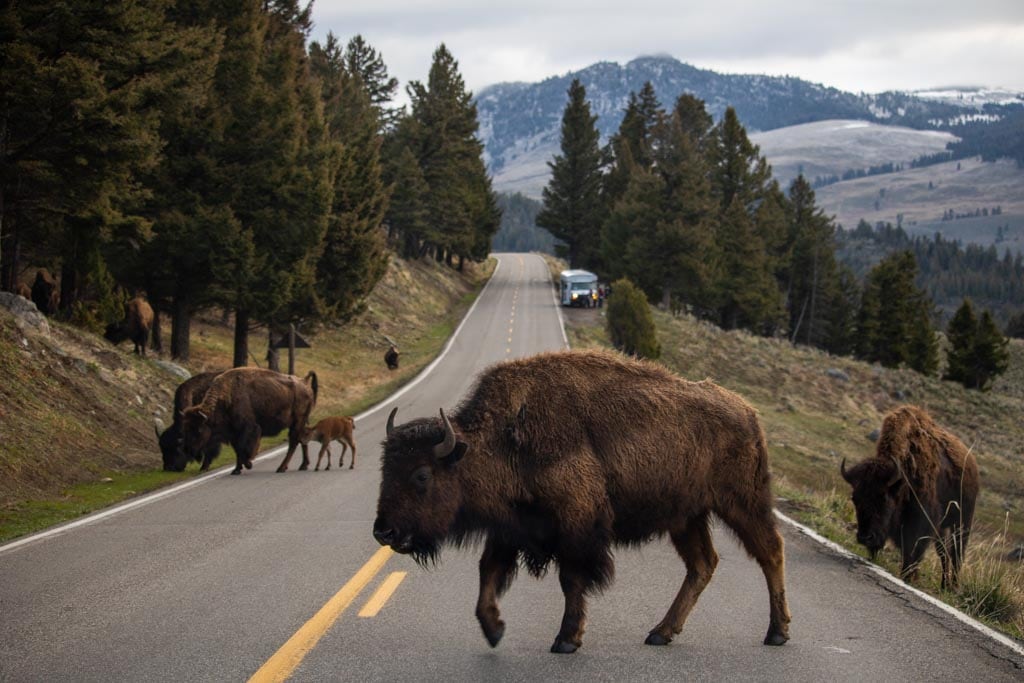
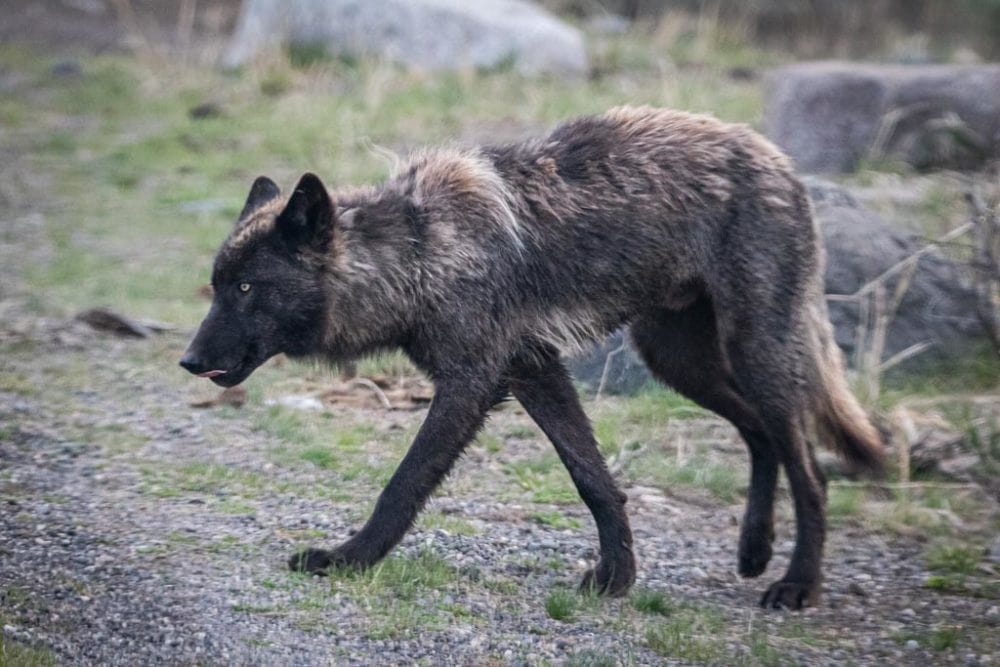
Home to a breathtaking abundance of megafauna, the grasslands of Yellowstone National Park’s Northern Range are often called “North America’s Serengeti.” The entire Lamar Valley is a wildlife paradise and the best place to see numerous iconic Yellowstone animals.
Large herbivores like pronghorn, deer, elk and bison roam the Lamar Valley year-round, often in enormous numbers. In fact, this area is home to some of North America’s largest wild herds of bison and elk.
In winter, they’re a critical food source for several wolf packs, while black and grizzly bears, re-emerged after months of hibernation, feast on winter-kill and prey on newborn calves in spring.
Coyote sightings are quite common as well. Other predators thrive here, too, but are less often seen—they include red foxes, mountain lions and bobcats.
The road across the Lamar Valley, between Tower Junction and Cooke City, just outside the park’s Northeast Entrance, is open throughout the entire year.
One of the my favorite places to visit in Yellowstone, the Lamar Valley offers probably the single greatest wildlife drive in the national parks, especially for famous national park mammals.
Watch for: American bison, pronghorn, elk, bighorn sheep, coyotes, grizzly and black bears, wolves, sandhill cranes
Alternative option: The Hayden Valley is another wildlife-rich river valley in Yellowstone. Located between Canyon Village and Lake Yellowstone, this is also a fantastic place to see Yellowstone’s iconic megafauna, including bears, bison, elk, the occasional moose, bald eagles, trumpeter swans and sandhill cranes.
South Unit Scenic Loop Drive, Theodore Roosevelt National Park
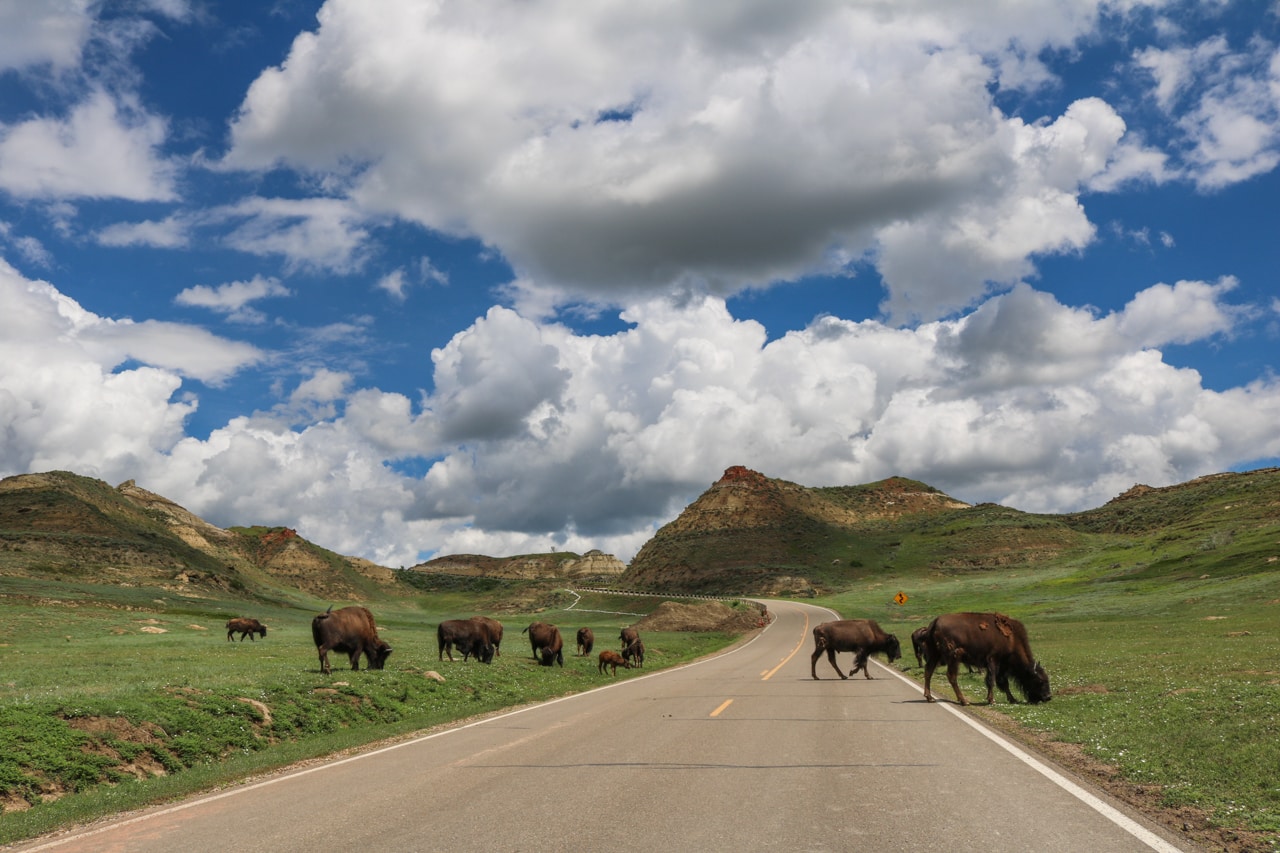
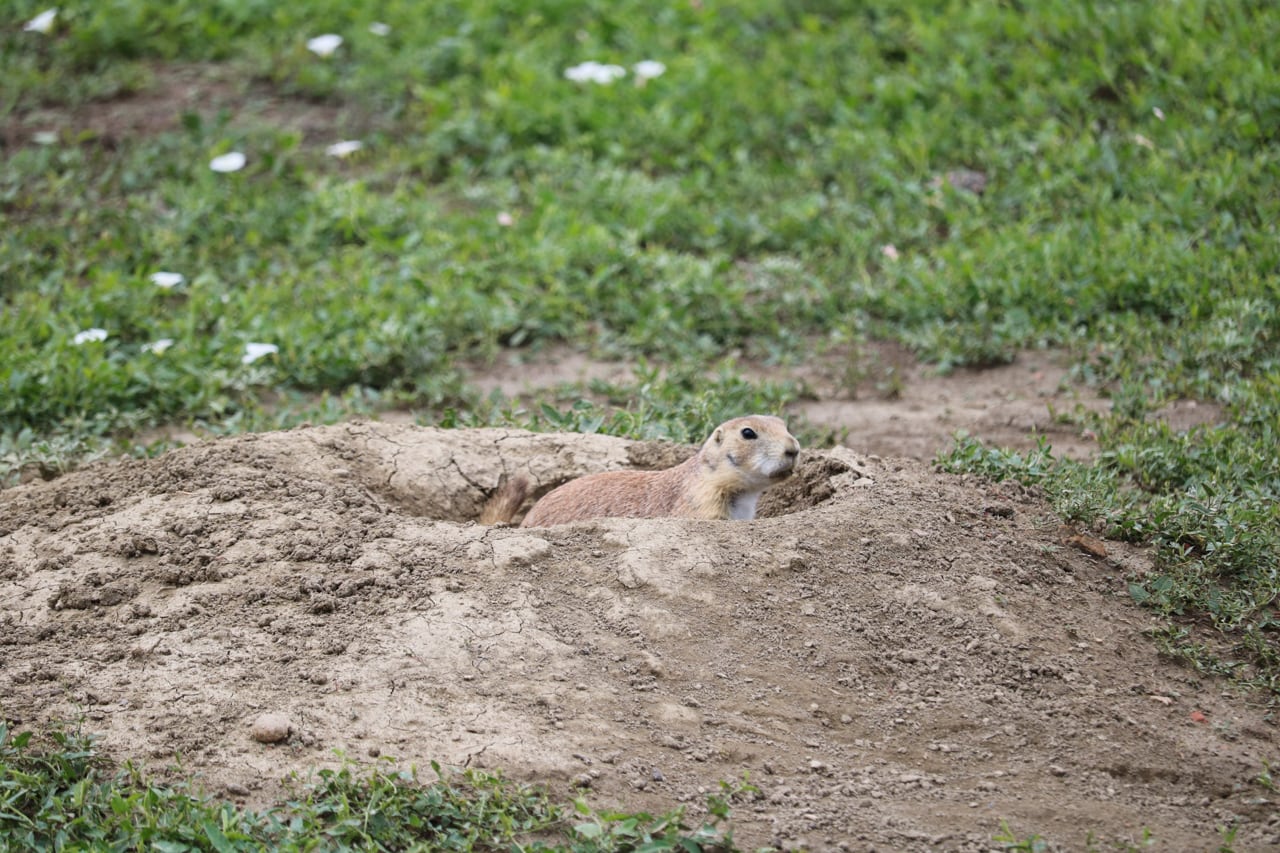
Looping through the heart of the South Unit of Theodore Roosevelt National Park, through the badlands and prairies, the 36-mile (58-kilometer) Scenic Loop Drive is one of the best wildlife drives in the national parks.
Starting just outside the Medora Visitor Center, the road runs past almost all top attractions in the South Unit. On this amazing loop, you’ll drive through sprawling prairie dog towns, across rolling grasslands and scenic badlands, past overlooks and trailheads.
Theodore Roosevelt National Park is one of a handful national parks that are home to American bison, sightings of which are almost guaranteed. On the way, you might also spot wild horses, mule deer and elk.
Watch for: American bison, wild horses, prairie dogs, mule deer, elk
Skyline Drive, Shenandoah National Park
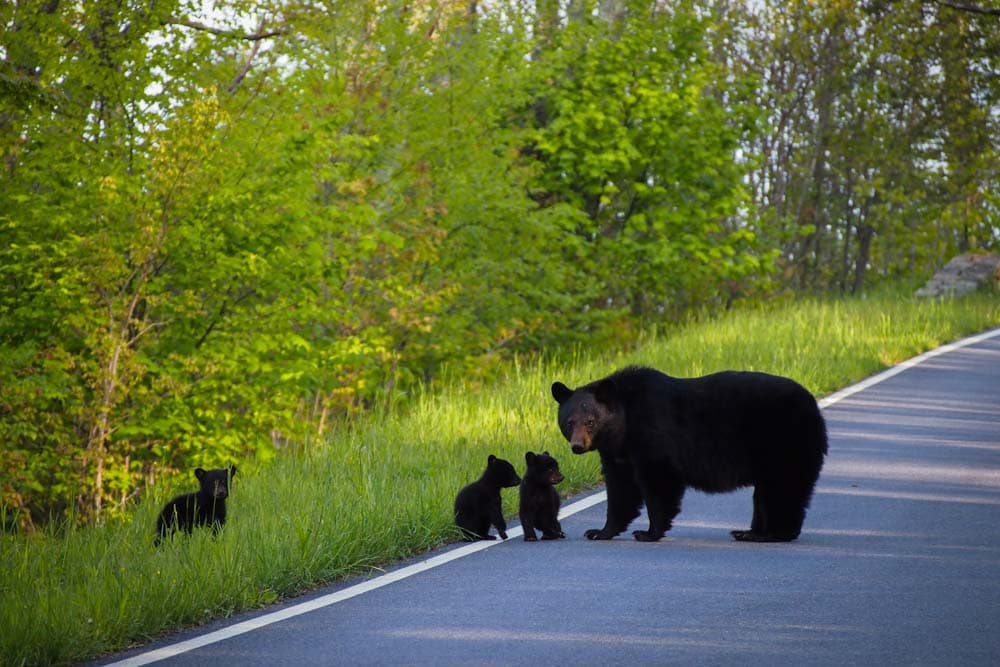
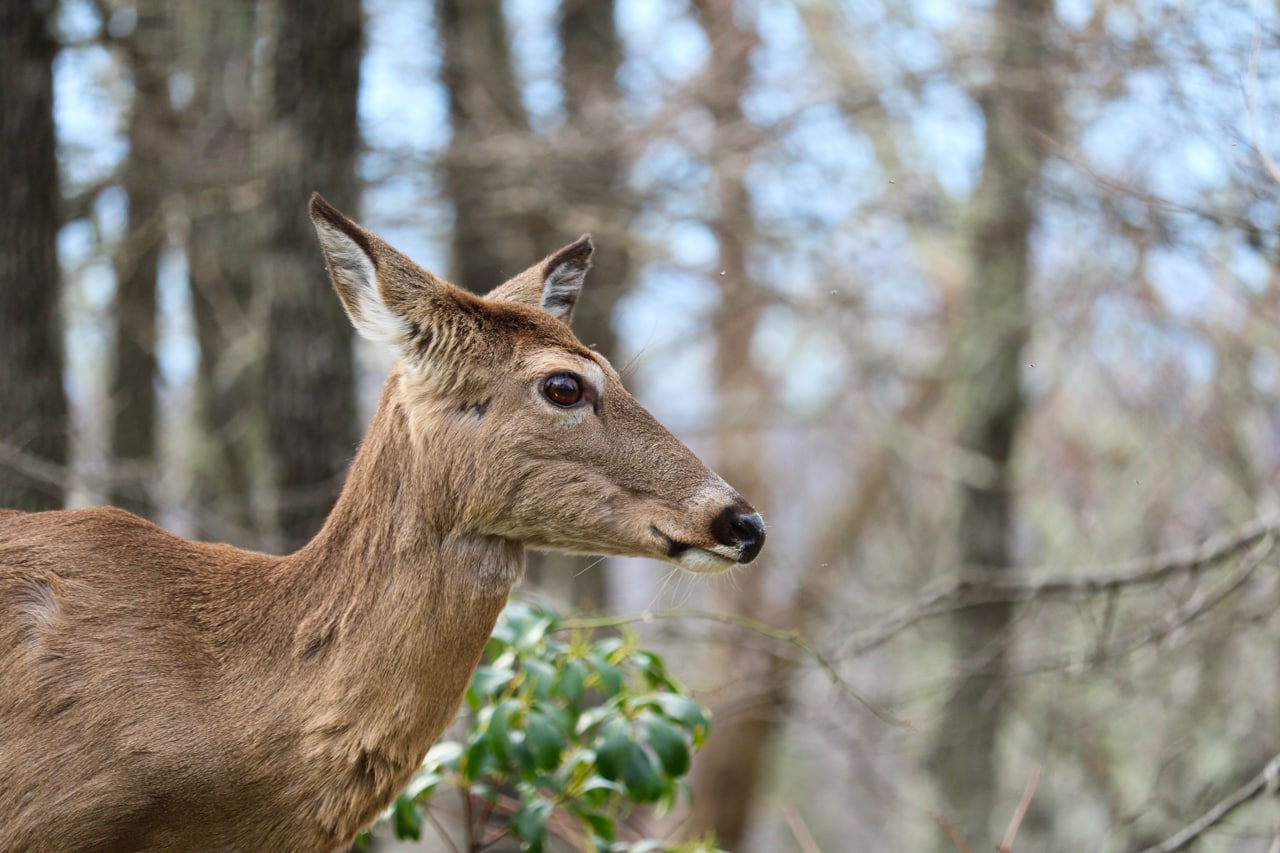
Meandering its way for 105 miles along the crest of the Blue Ridge Mountains in Shenandoah National Park, the stunning Skyline Drive offers great hiking, views, historic sites, numerous waterfalls and wild animals.
This is the only road within Virginia’s only national park, a jaw-dropping drive from its northern entrance in Fort Royal to the southern entrance at Rockfish Gap near Waynesboro.
Along the way, there are more than 70 overlooks, all of which provide amazing views of Shenandoah National Park‘s mountains and/or the Shenandoah Valley.
Thanks to its many viewpoints and two well-located historic national park lodges (Big Meadows Lodge and Skyland Resort), Skyline Drive also offers unparalleled sunrise and sunset viewing.
Additionally, while driving this forested mountain road, you’ll pass dozens of trailheads, which lead to either mountain summits or down into the woods to a waterfall.
On top of that, spending a day or two on Skyline Drive comes with guaranteed wildlife sightings. Shenandoah National Park is home to a large black bear population and you can often see these large mammals foraging on the roadsides.
At Big Meadows, in the heart of the park, white-tailed deer are seen every single morning and evening—and often during the day as well. You might also see wild turkeys, chipmunks, groundhogs and a variety of birds.
Watch for: White-tailed deer, black bears, wild turkeys and other birds
Badlands Loop Road, Badlands National Park
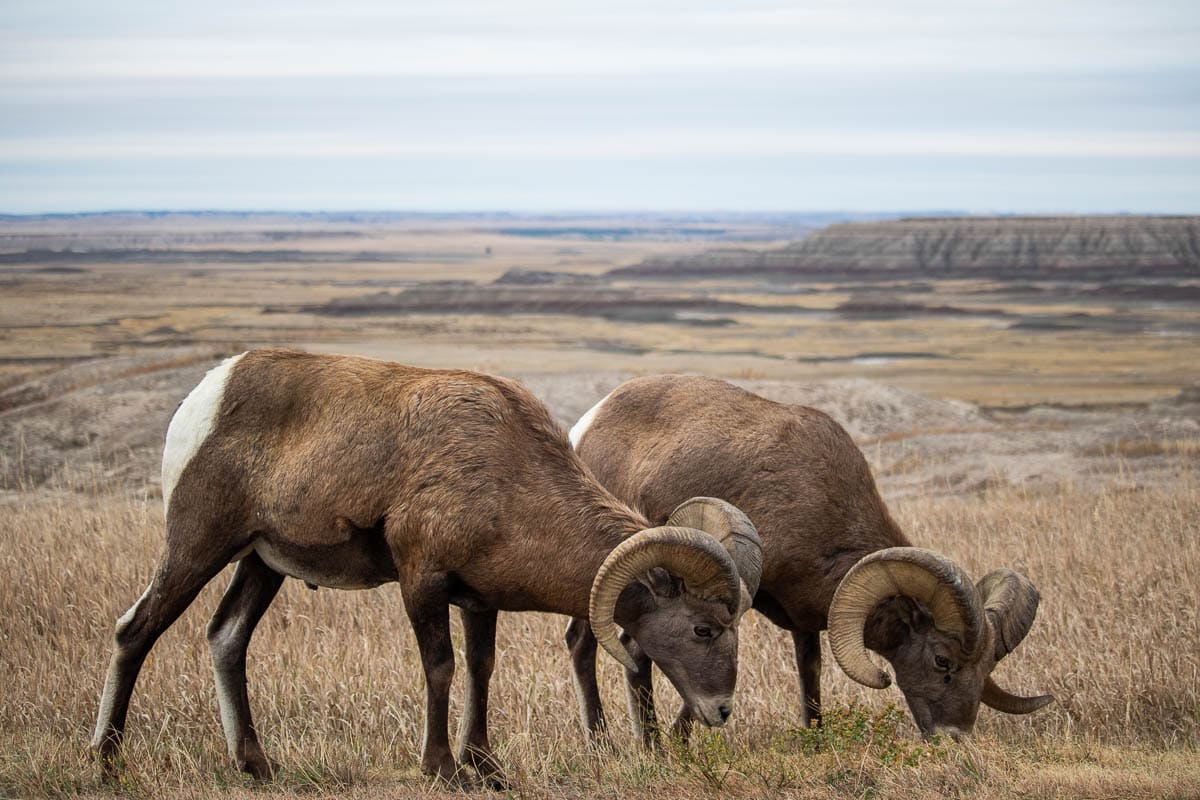
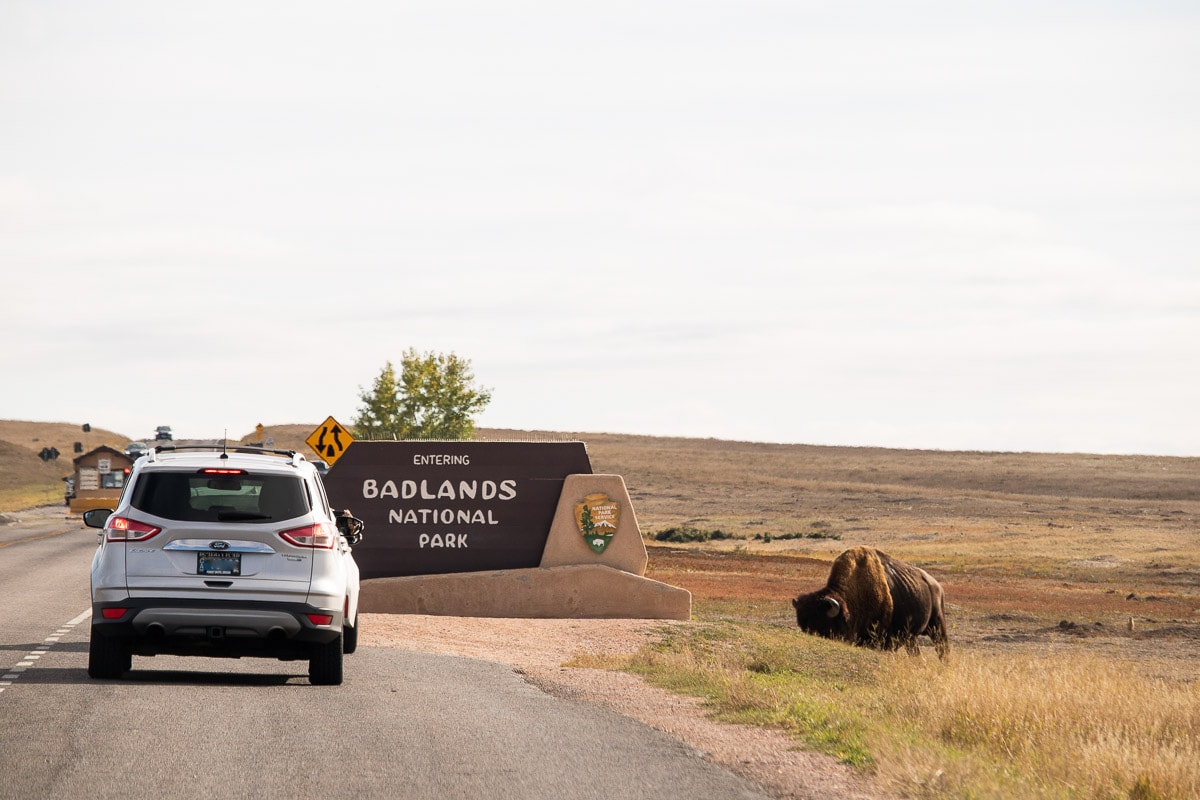
One of the most remarkable national park wildlife drives is located in South Dakota’s Badlands National Park.
The Badlands Loop Road, officially called Route 240, winds its way for over 30 miles through a landscape dominated by grasslands, colorful sandstone hills, buttes and rock spires.
There are more than a dozen breathtaking Badlands overlooks, such as the Big Badlands Overlook, the White River Valley Overlook and the Yellow Mounds Overlook.
Many of those offer fantastic sunset and sunrise views of the Badlands. There are a handful of scenic hiking trails and the excellent Ben Reifel Visitor Center on the way as well.
Although its name says “loop”, this is not an actual circuit. It’s a two-lane road through the park’s north unit, but you do have the option to circle back to where you started via I-90 between Wall and Cactus Flat.
The grasslands of Badlands National Park are home to herds of American bison, pronghorns, fascinating burrowing owls, and expansive prairie dog towns, while bighorn sheep hide in the hills.
Read more about Badlands National Park wildlife here!
Watch for: American bison, mule deer, pronghorn, prairie dogs, bighorn sheep, burrowing owls
Going-to-the-Sun Road, Glacier National Park
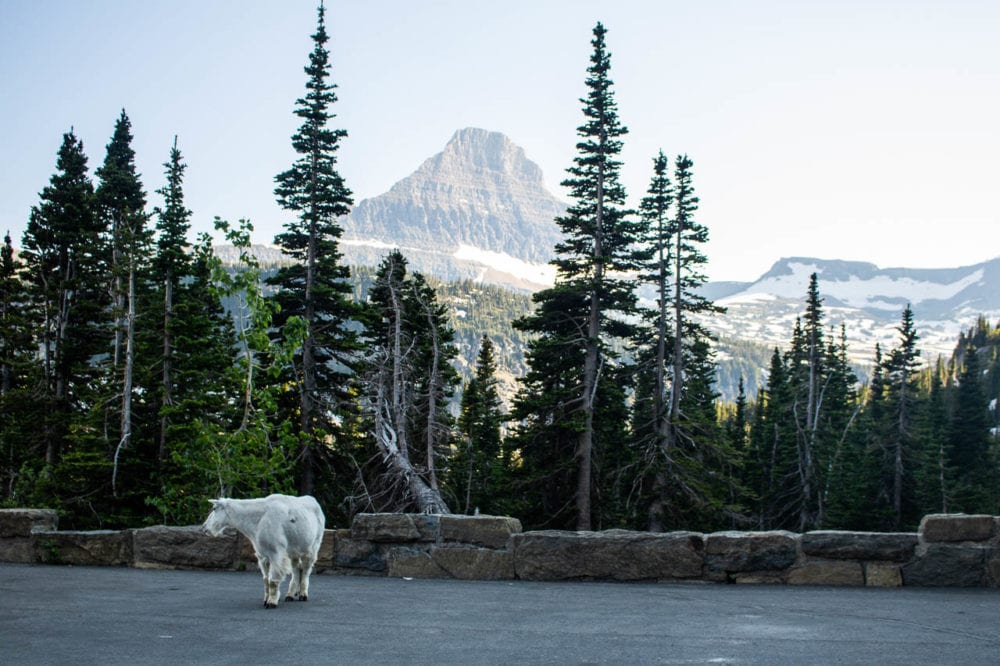
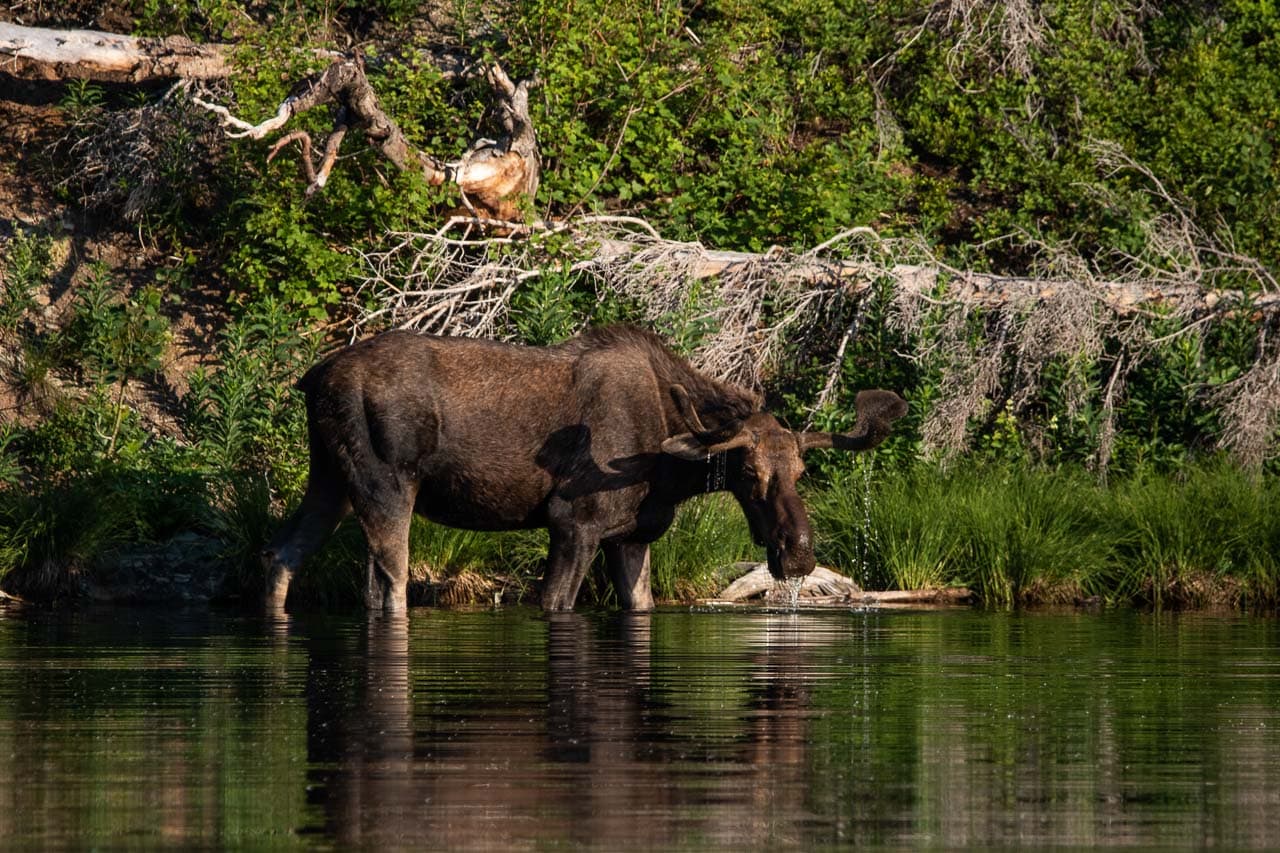
Without question one of the most spectacular wildlife drives in the national parks, the Going-to-the-Sun Road is the only road that crosses Glacier National Park, Montana.
Nearly 50 miles long, this road features a bunch of hairpin bends, which render it unsuitable for vehicles longer than 21 feet and wider than 8 feet.
With a smaller vehicle, however, it’s a breathtaking driving experience through some of the wildest landscapes in the contiguous United States. You’ll drive past shimmering glacial lakes, spectacular panoramic views, and sheer cliffs.
Due to its elevation and Glacier’s long winter season, the Going-to-the-Sun Road usually doesn’t open until late-June or early-July. It typically stays open to vehicles until about mid-October. So, this is essentially a drive you can only do in summer.
That said, though, the short summer season in Glacier National Park is absolutely glorious. This time of year brings thundering waterfalls, stunning wildflowers, magnificent hiking opportunities and an impressive array of wildlife, all of which offer amazing opportunities for photography in Glacier National Park.
Along the Going-to-the-Sun Road, you can almost always see bighorn sheep and mountain goats, while sightings of deer and even moose aren’t uncommon either. If you’re lucky, you might even spot a black bear or grizzly bear.
Accommodations along this epic drive include Apgar Village, Lake McDonald Lodge and Rising Sun Motor Inn.
Watch for: Bighorn sheep, mountain goats, moose, black and grizzly bears
Teton Park Scenic Loop Drive, Grand Teton National Park
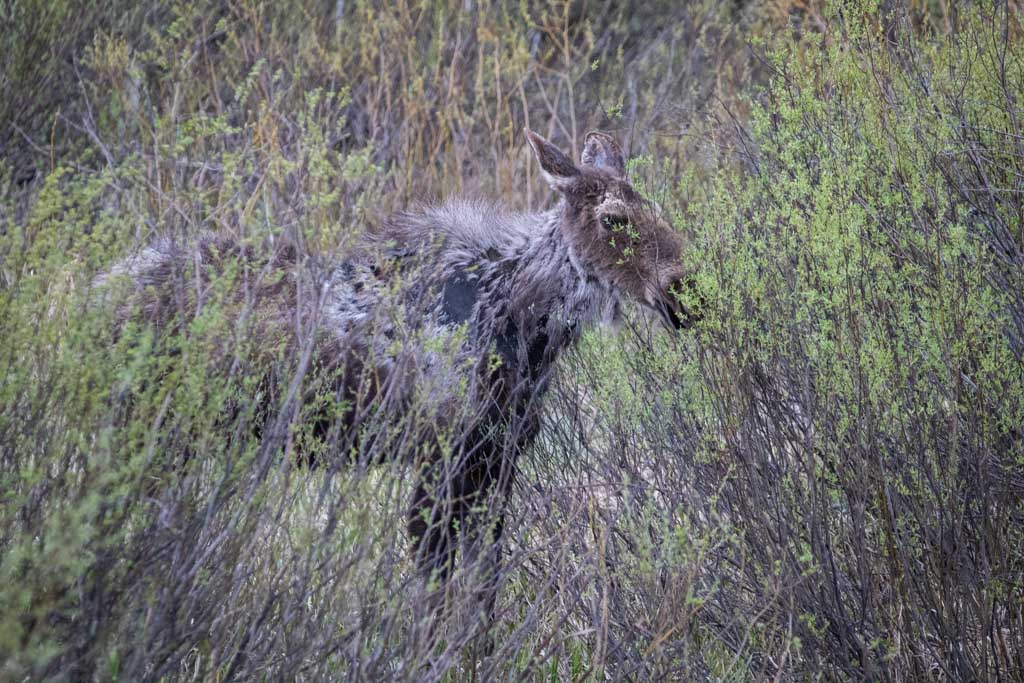
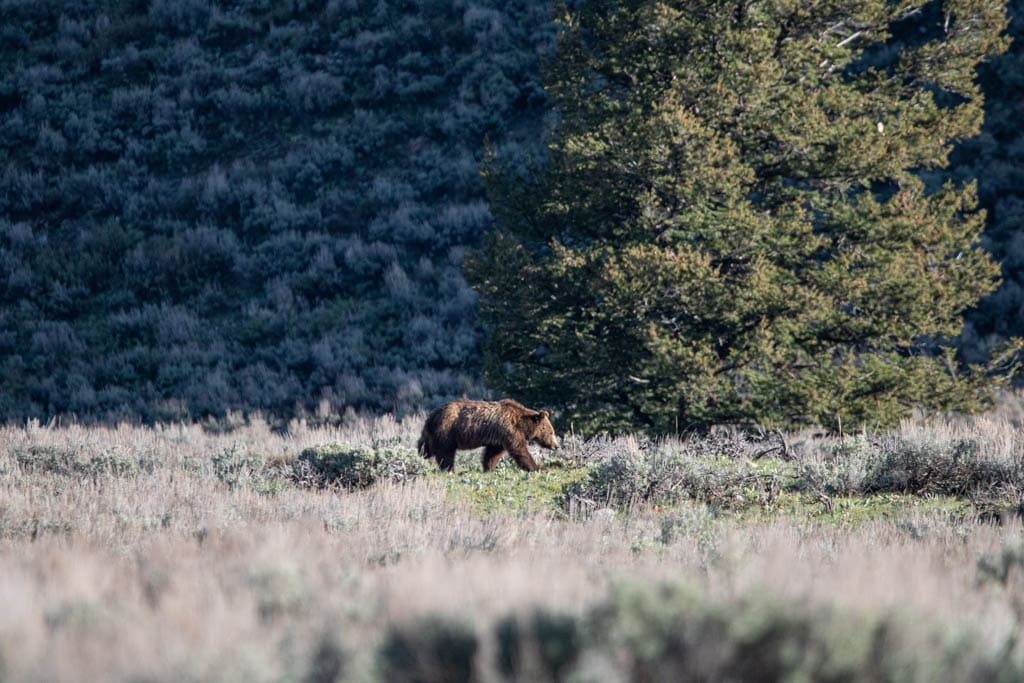
A 42-mile circuit through Grand Teton National Park in northern Wyoming, the Teton Park Scenic Loop Drive is a combination of the Teton Park Road and Route 191.
There are countless attractions along the way, including the Jenny Lake Visitor Center, numerous turnouts and overlooks, and a number of hiking trails.
If you’re looking for those iconic Grand Teton views, you’ll find them all along this epic wildlife drive.
From beautiful lakes to glorious mountain views, from magnificent sunrises and sunsets to plenty of Grand Teton wildlife, including American bison, elk, pronghorn, moose and grizzly bears, this is easily one of the greatest wildlife drives in the entire country.
While the Teton Park Road offers access to Grand Teton National Park’s stunning lakes, most notably Jenny Lake and Jackson Lake, Route 191 arguably has the best wildlife viewing spots.
Pull over at viewpoints like Blacktail Ponds, Oxbow Bend or Willow Flats for spectacular views of the Teton Range and possible sightings of bison, bears, elk, pronghorn and moose, the latter of which you’re almost guaranteed to see.
Watch for: American bison, moose, elk, pronghorn, grizzly and black bears
For the ultimate wildlife trip in the contiguous United States, nothing beats a northern Rockies national parks road trip. Drive from Grand Teton, through Yellowstone, to Glacier National Park and see all iconic megafauna in America!
Wildlife Safety in the National Parks
If you decide you get out of your car to see wildlife on these national park drives, always keep in mind that you’re dealing with wild animals. Most parks require you to stay at least 100 yards from wolves and bears, and more than 25 yards from all other animals. When recreating in bear country, always carry bear spray and make sure you know how to use it properly.
If you do encounter a wild animals on a (short) hike from the road, follow the guidelines for each specific animal below.
When driving through wildlife habitat—which is basically anywhere you’re driving in a national park—it’s very important to keep your eyes on the road. And stick to the speed limit!
Vehicle strikes occur quite regularly and they’re one of the deadliest type of wildlife encounters in the national parks. They can be deadly to drivers, passengers and/or the animals involved.
If you spot an animal from the road, always pull over first, making sure all four wheels of your vehicle are completely off the road. Never stop in the middle of the road!
You can read more about wildlife viewing safety on the National Park Service website.

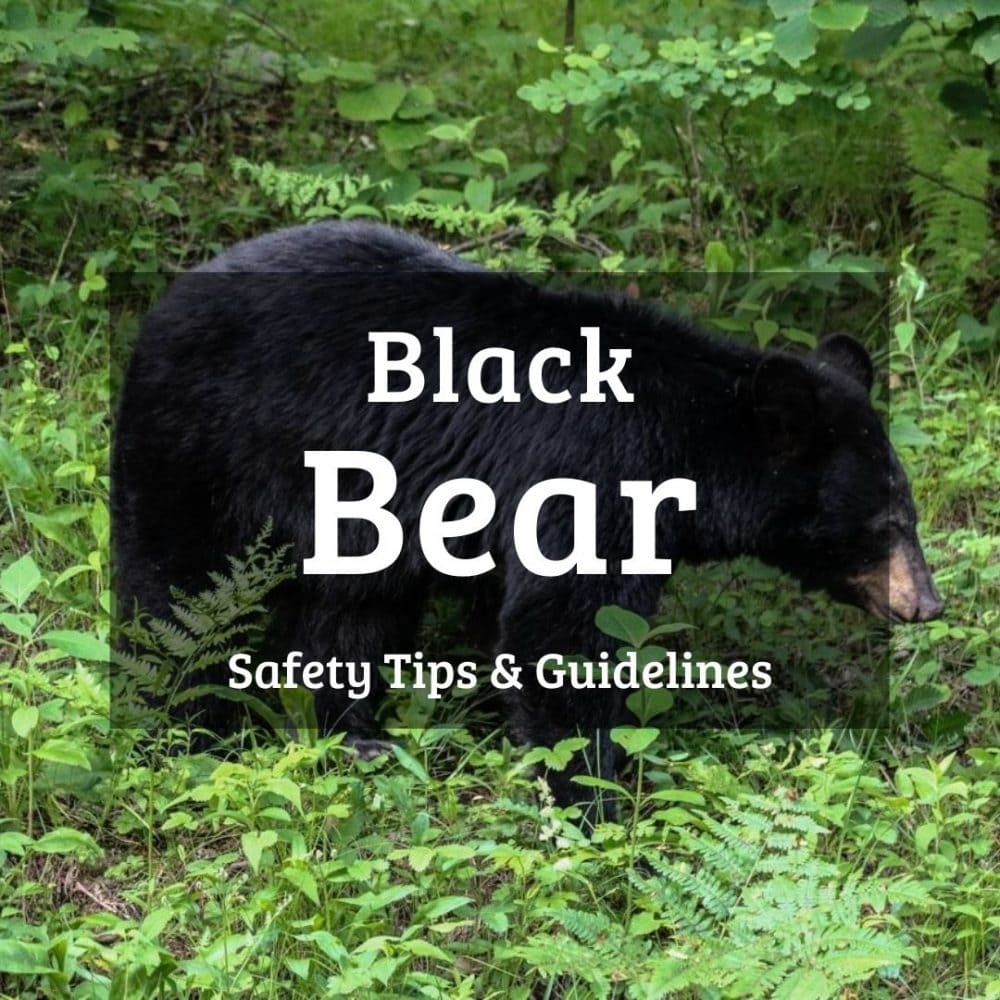
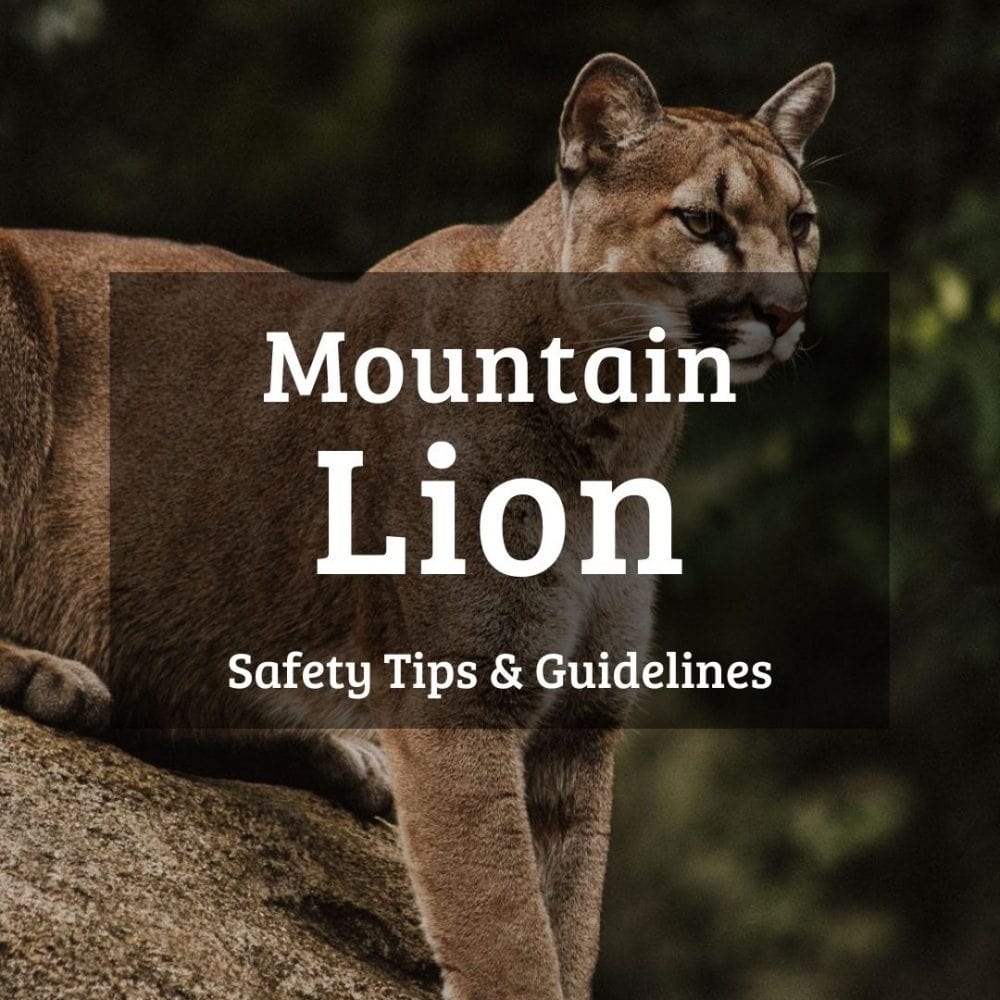
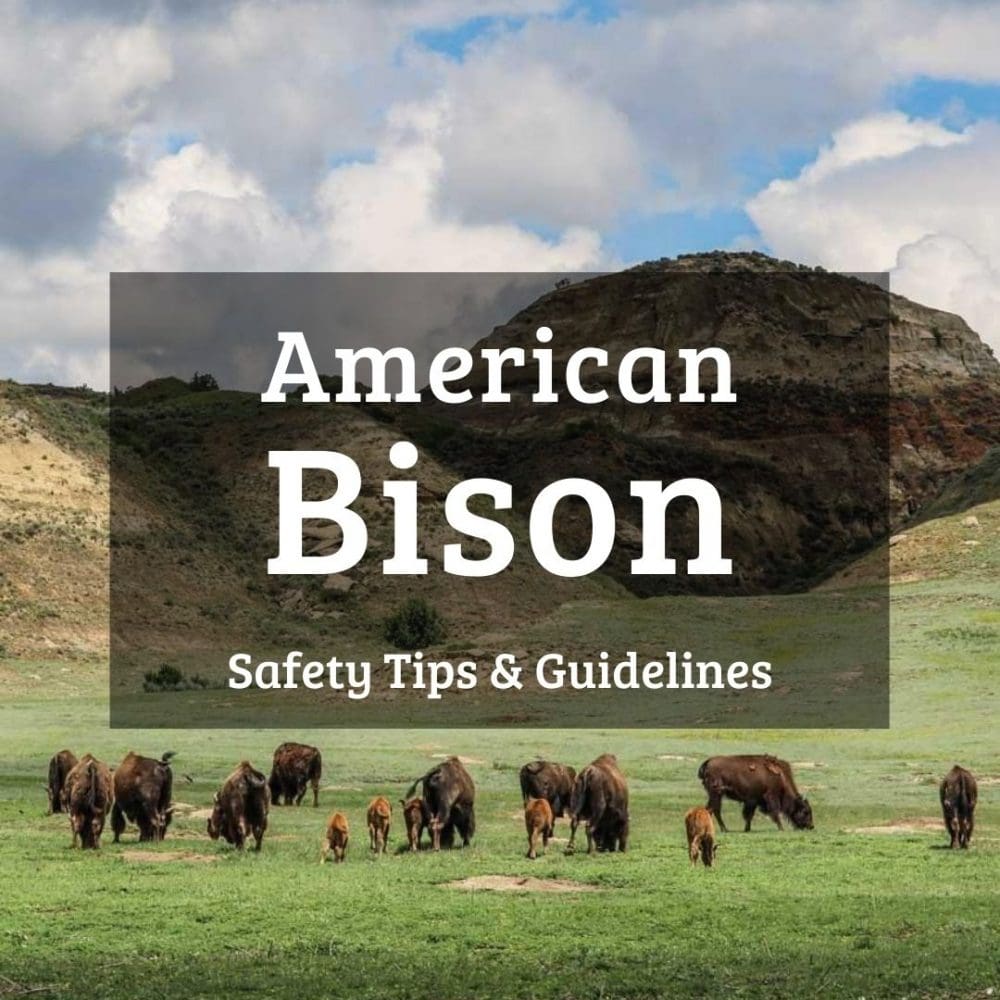
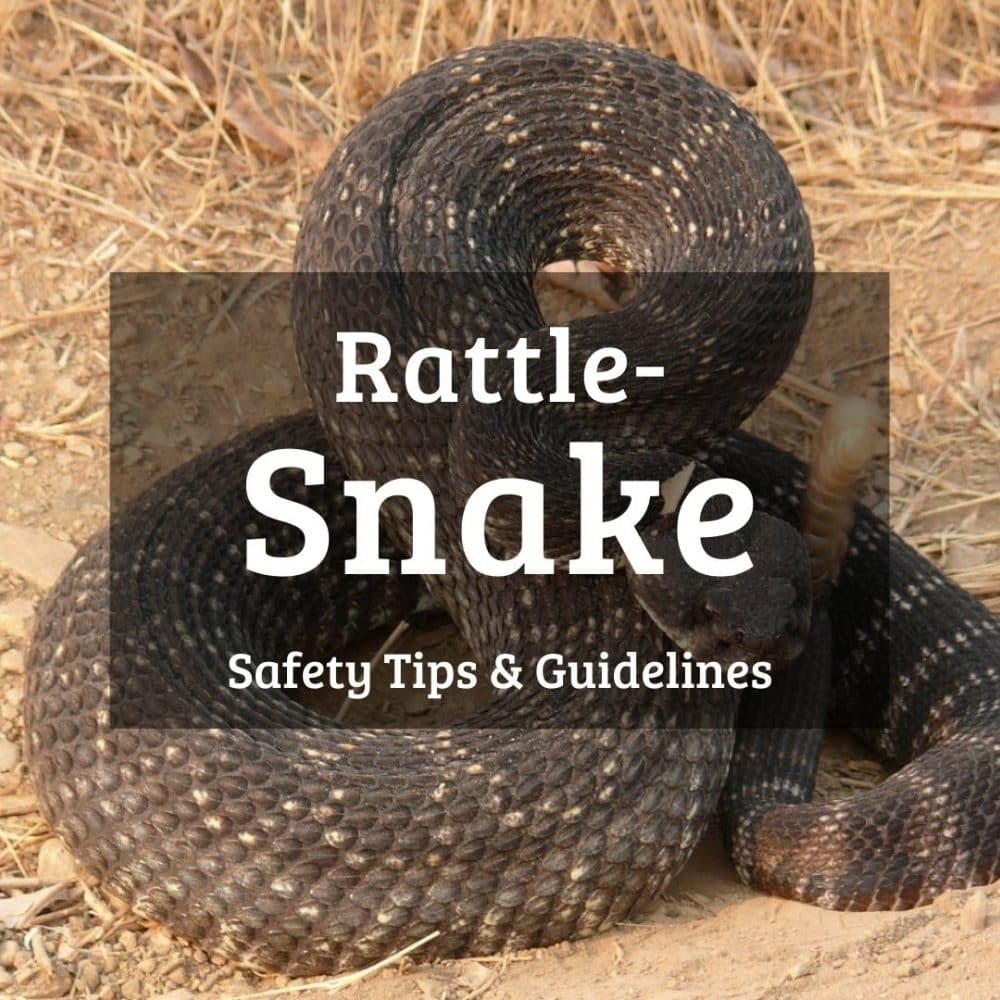
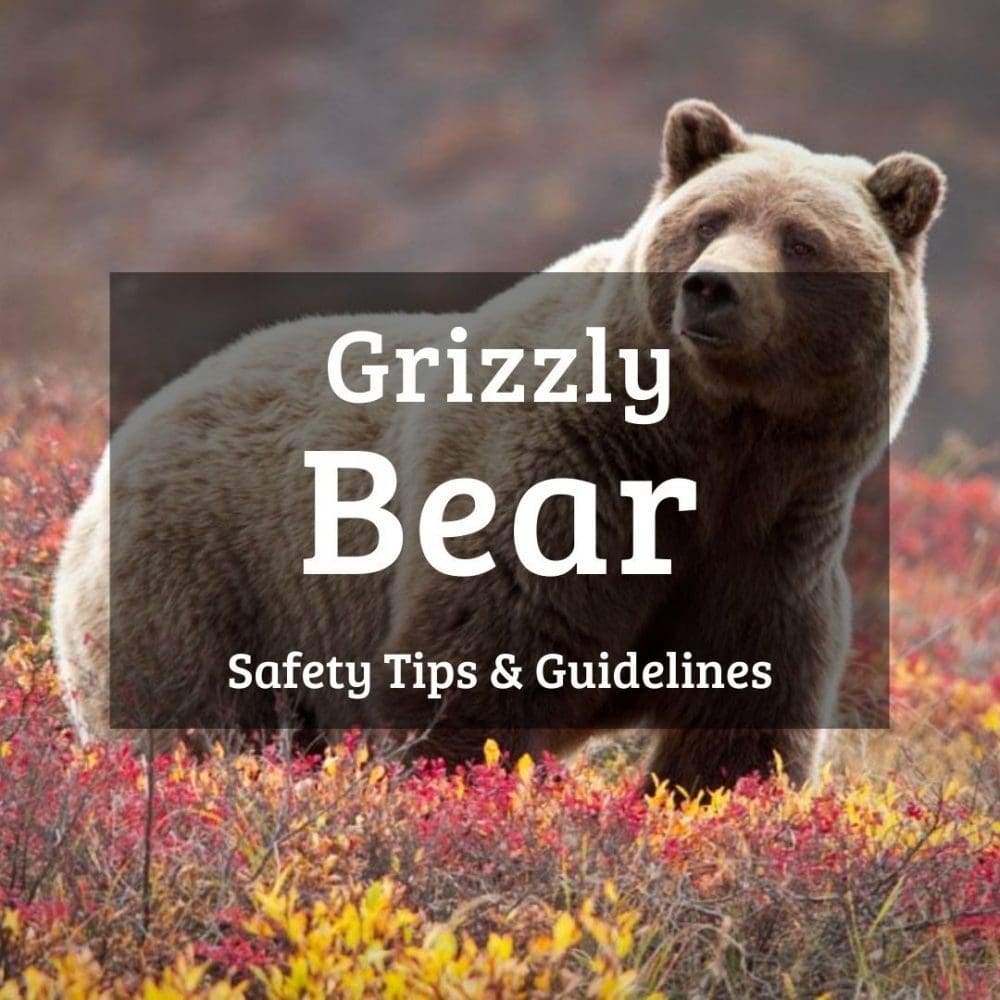
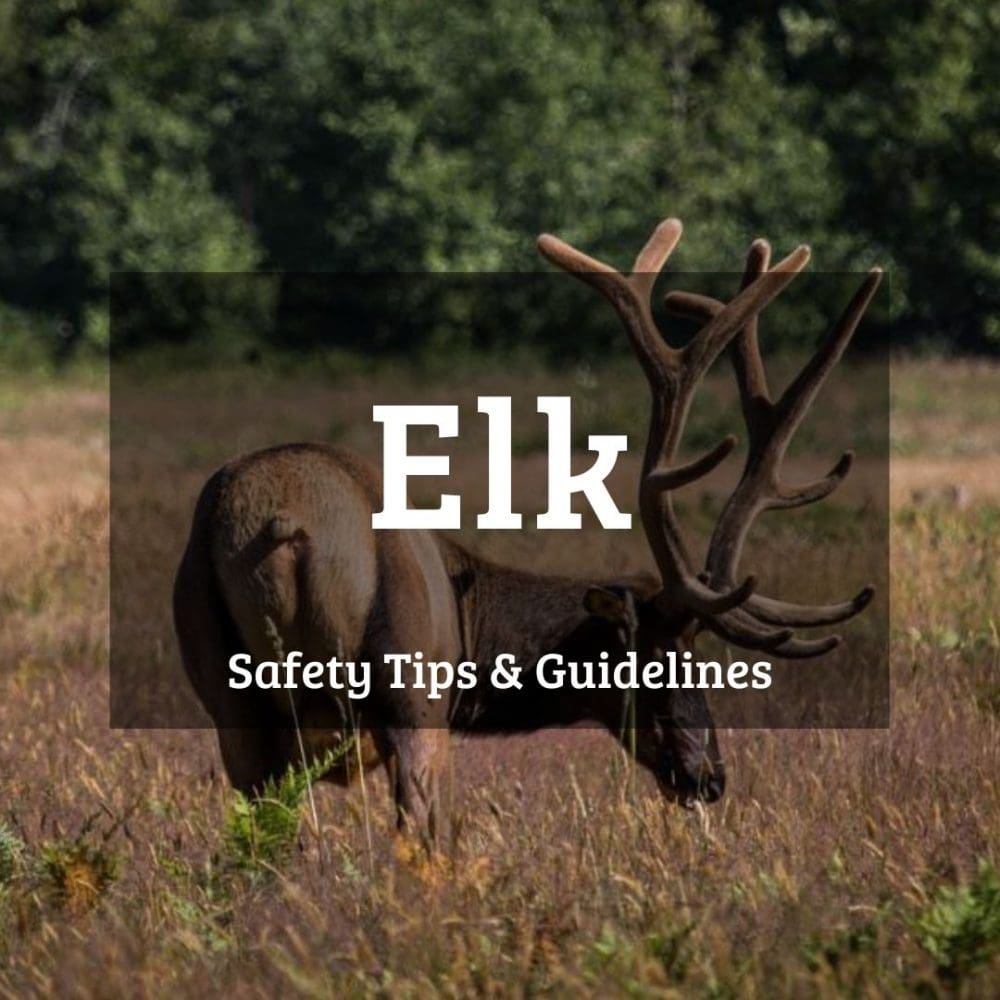
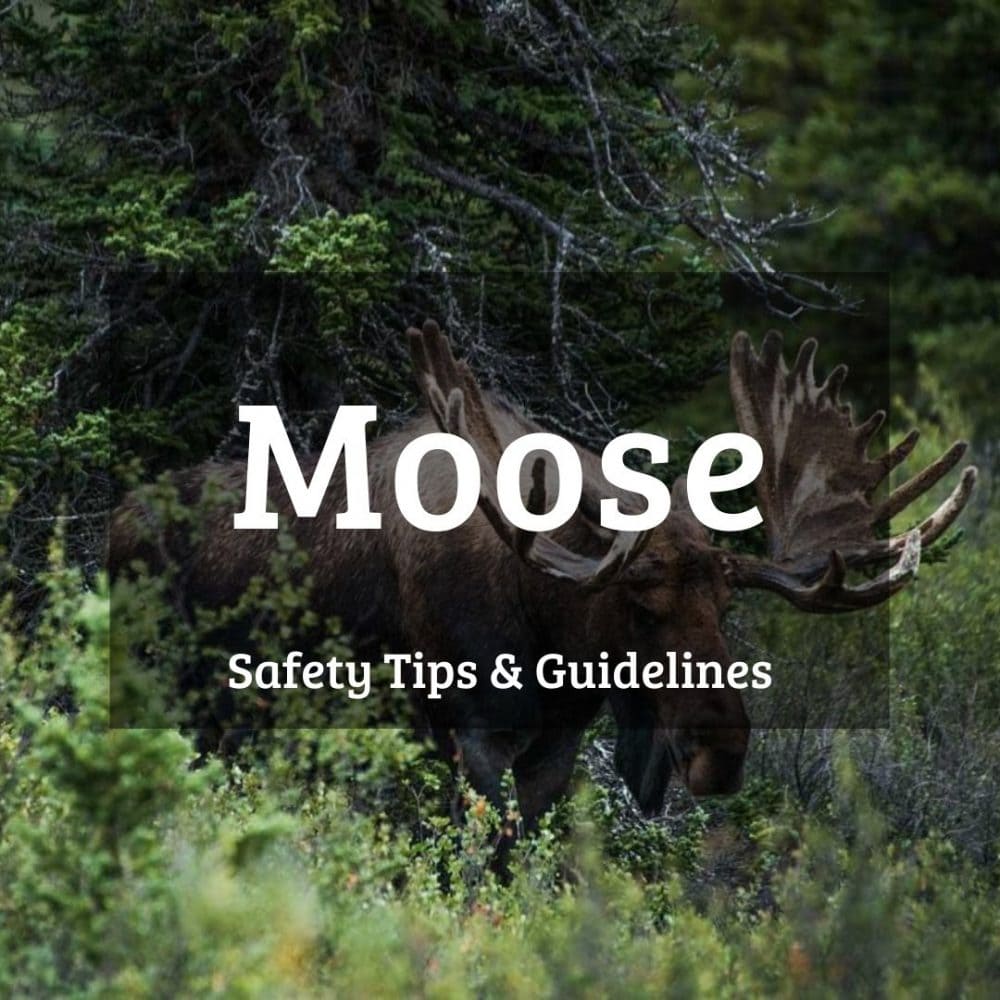
Laurel Yost
Monday 25th of April 2022
I will be visiting 5 National Parks in May, Rocky Mountain, Arches, Canyonlands, Yelliwstone, & Black Hills/Badlands. Can't wait!
Bram
Monday 25th of April 2022
Sounds like an amazing trip, Laurel! Enjoy!